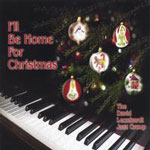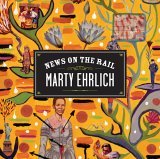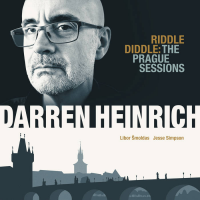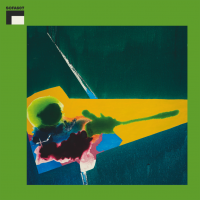Home » Jazz Articles » Multiple Reviews » Bob Dylan: No Direction Home & Live at the Gaslight 1962
Bob Dylan: No Direction Home & Live at the Gaslight 1962
On both CD and DVD, No Direction Home gives you pause to reflect upon what you
 Bob Dylan
Bob Dylan No Direction Home
Legacy Music
2005
No Direction Home, like so many Bob Dylan projects, is more than meets the eye and ear. In both the compact disc and DVD configurations, each comprised of two-discs, the music and the presentation itself will challenge your preconceptions, perceptions and recollections of the bard from the North Country.
The audio package, subtitled "Bootleg Series Vol. 7 is the latest in Dylan's sly attempt to provide what for other artists would be posthumous chronicling of his art while he is still alive. With all but two of the tracks unreleased, manyof these acoustic and electric performances, have never been heard before (except perhaps in bootleg form) while the alternate takes of famous electric tunes from the 1965 recording sessions for Highway 61 Revisited give a different slant on the studio process and the artist(s).
It's an effect somewhat akin to looking at the photos that adorn the cd liner and the accompanying booklet (the text of which by al Kooper is illuminating as it is funny, Andrew Loog Oldham's notes self-obsessed in a wearisome way): alternate shots of famous pics like the cover of blonde on blonde prompt a double take, making you wonder what you are now looking at and what you saw before.
In a similar fashion, hearing different arrangements of "It Takes a Lot to Laugh, it Takes a Train to Cry and especially "Desolation Row, stir you to rethink your reaction to the music and Dylan himself. Certainly, the rewrites of the lyrics are obvious, but to listen closely and notice how the ultimate alteration of the words had such a profound affect on how the author sings the song brings to mind the never-ending criticism of Dylan as a vocalist. You may see the offering of these different versions as a response to those criticisms and rebuttal of them in no uncertain terms.
The DVD(an expanded version of the PBS boradcast, available from Paramount Home Video) posits much the same retelling of the Dylan myth in a broader context of his progression from Woody Guthrie wannabe to the reinventor of folk music then on to the visionary explosion of poetry cum electric rock and roll that found its definitive moment (perhaps depending on if it your favorite song?) in "Like A Rolling Stone. While it's said director Martin Scorcese began his contributions to No Direction Home after it was well underway, there's no denying the guiding hand of this great filmmaker (who also, not coincidentally, made the film of The Last Waltz, the documentary of the final concert by The Band, Dylan's great accompanists).
There's a palpable suspense that grows throughout the course of the four plus hours, as footage of Dylan's various stomping grounds, from Minnesota Iron Range to Greenwich village to the New port folk Festival then on to England with The Band(his gallant knights as he described his touring mates) is interspersed with film of the times, such as the march on Washington where MLK gives his "I Have A Dream speech.
This is all bound together by startling frank interview footage of the present-day Bob Dylan, which finds him at times disingenuous(not a topical songwriter—but more often good-humored and remarkable perceptive of himself and his life and his work. Add to that the fact that, in comparing this footage with some of the interview segments of a younger Dylan forty years ago, it is downright spooky to see how the Dylan in his sixties, with the curly hair and flashing blues yes, looks so similar to the fresh-faced figure fending off inane and occasionally downright rude questions and questioners.
The tension escalates in No Direction Home just as more and more footage of Dylan's tour with the Band, then know as the hawks, follows recounting of his famous electric debut at Newport, with video of the entire performance including the acoustic encore of "it's All Over Now Baby blue. apart from perhaps Miles Davis, has an artist ever so directly confronted his audience as Bob Dylan did at this juncture of his career?. It's one thing to have read about his confrontations with his heckling audiences as he toured the world in 65 and 66, bit's another thing to hear and see him subject himself to the catcalls, then get into the collective face of his non-fans with raucous, blues-derived tunes like "Leopard Skin Pillbox Hat.
Recording technology of the day what it was—'archaic' in Dylan's own present day words—the digital remastering can't fully translate the power of the music, but you can sense it, particularly in Rick Danko's acrobatic basslines and Robbie Robertson's frenetic lead guitar, nether of which comes close to the intensity of Dylan's own singing and stage presence; looking increasingly haggard as the tour goes on(two interludes find the man himself remarking on his fatigue and desire to go home), Dylan nevertheless comes alive onstage, communicating less disdain for his non-believing audience than impatience.
An unexpected side-effect of No Direction Home is to illustrate the point of Dylan's departure from the realm of folk music into rock and roll Live at The Gaslight 1962 is on the surface anyway, the least of the Dylan packages out this autumn (unless you count The Bob Dylan Scrapbook a collection of photos). Widely bootlegged, purportedly in a more complete form than this 45-minutes plus selection of a dozen tracks, this live recording of a young Dylan took place between the time he released his first album for Columbia and the release of its follow-up The Freewheelin Bob Dylan.
Given some distinction by dint of its release on The Starbucks custom label Hear Music, its earth-colored graphic design actually sublimates the fancy digi-pak in which it comes. But the generally superb sound impresses and liner notes by Sean Wilentz illuminate both the artist and the times in which he lived: you wish you had been around or find yourself glad you were. Live at the Gaslight 1962 thus becomes an important, perhaps essential companion piece to the broader anthology, not so much for the inclusion of original material, of which here are only two pieces, but the skills Bob displayed in performing those self- penned tunes along with his own arrangements of traditional material.
Live at the Gaslight 1962 thus becomes an important, perhaps essential companion piece to the broader anthology, not so much for the inclusion of original material, of which here are only two pieces, but the skills Bob displayed in performing those self- penned tunes along with his own arrangements of traditional material.
Accordingly, this archive piece magnifies Dylan's skills as a singer, revealing how he reinvented blues vocal vernacular by marriage to abstract lyrics such as "A Hard Rain's Gonna Fall and "Don't Think Twice It's alright, then pushing the boundaries to the breaking point by going electric. Likewise, Dylan's not tentative in his musicianship, the abandon in his guitar playing sharpening the textures of his acoustic instrument and tailoring it effectively to his often-nasal vocal range.
The notes of for Gaslight reference Bob Dylan's appearances at the club as a testing ground for his material. but if that's the case, it had more to do with measuring the audience reception rather than the artist's delivery: the young man radiates all the assurance that comes with diligent practice, combined with the confidence that derives from a burgeoning vision the likes of which popular music has never known before or since.
After all, his shows of the time consisted of two sets, one all acoustic and the second electric: how better to meet your fans halfway and hereby invite them to open their minds as you as the artist have opened yours? Did Miles play "Kind of Blue with his young electric bands? The clichéd thought of how is this movie going to end is anything but Hollywood, as final footage of "Like A Rolling Stone following the famous "Judas interaction leads into a simple that graphic explaining how Dylan suffered a motorcycle accident following his tour, then continued to record and tour in later years.
Brazen understatment to be sure, communicating none of the drama of Bob Dylan's born-again Christian phase, his triumphant reunion with the Band in 1974, not to mention he glorious Rolling Thunder Review our of 1975 which so quickly followed the watershed album Blood on the Tracks. but, like Dylan's quasi autobiography book Chronicles Vol. 1 released last fall , the closing of No Direction Home gives you pause to reflect upon what you've just seen and heard, and consider how it compares to what you know or thought you knew about Bob Dylan.
As has been the case throughout most of his career, this project is a means of Dylan reinventing himself, perhaps one last time for posterity given his age and his admission to 60 Minute ed Bradley last fall (in promoting his book), that he's probably not able to write songs such as "Jut Like Tom Thumb's Blues any longer. One of the best features of the DVD is the ability to select and view just the performances; bringing to mind he thought some of Dylan's best work, both in terms of lyrics and melody, are contained in some of his less-known compositions, such as "Love Minus Zero/No Limit and "Love Is Just a Four Letter Word.
One of the best features of the DVD is the ability to select and view just the performances; bringing to mind he thought some of Dylan's best work, both in terms of lyrics and melody, are contained in some of his less-known compositions, such as "Love Minus Zero/No Limit and "Love Is Just a Four Letter Word.
But the real treat and the prime focus of the No Direction Home DVD set are the explosive performances of Bob Dylan and the Band, harnessing all the power they can muster, firing thunder and lightening at once at audiences in front of them; to be able to choose the options to view those complete performances on disc two of this set is, along with the interview sequences with today's Dylan, is well worth the price of the package itself.
Visit Bob Dylan on the web.
No Direction Home
Tracks: CD1: When I Got Troubles; Rambler, Gambler; This Land Is Your Land; Song To Woody; Dink's Song; I Was Young When I Left Home; Sally Gal; Don't Think Twice, It's All Right; Man Of Constant Sorrow; Blowin' In The Wind; Masters Of War; A Hard Rain's A- Gonna Fall When The Ship Comes In;Mr. Tambourine Man; Chimes Of Freedom; It's All Over Now, Baby Blue. CD2: She Belongs To Me; Maggie's Farm; It Takes A Lot To Laugh, It Takes A Train To Cry; Tombstone Blues; Just Like Tom Thumb's Blues; Desolation Row; Highway 61 Revisited; Leopard-Skin Pill-Box Hat; Stuck Inside Of Mobile With The Memphis Blues Again; Visions Of Johanna ; Ballad Of A Thin Man ; Like A Rolling Stone.
Live at The Gaslight 1962
Tracks: A Hard Rain's A-Gonna Fall; Rocks and Gravel; Don't Think Twice, It's All Right; The Cuckoo; Moonshiner; Handsome Molly; Cocaine; John Brown; Barbara Allen; West Texas.
Personnel: Bob Dylan: vocals, acoustic and electric guitar, harmonica; Al Kooper: keyboards, Michael Bloomfield: guitar; Sam Lay: drums, Jerome Arnold: bass; Barry Goldberg: piano; Paul Griffin: piano; Bobby Gregg: drums; Harvey Brooks: bass; Mickey Jones: drums; Robbie Robertson: electric guitar: Rick Danko: bass and vocals; Garth Hudson: keyboards; Richard Manuel Keyboards; Al gorgoni: guitar: Frank Owens: piano: Wayne Moss: guitar; Hargus "Pig Robbins: piano; Charlie McCoy: guitar; joe South; guitar; Henry Strzlecki: bass; Kenny Buttrey: drums; Will Lee: bass.
Tags
PREVIOUS / NEXT
Support All About Jazz
 All About Jazz has been a pillar of jazz since 1995, championing it as an art form and, more importantly, supporting the musicians who make it. Our enduring commitment has made "AAJ" one of the most culturally important websites of its kind, read by hundreds of thousands of fans, musicians and industry figures every month.
All About Jazz has been a pillar of jazz since 1995, championing it as an art form and, more importantly, supporting the musicians who make it. Our enduring commitment has made "AAJ" one of the most culturally important websites of its kind, read by hundreds of thousands of fans, musicians and industry figures every month.



















